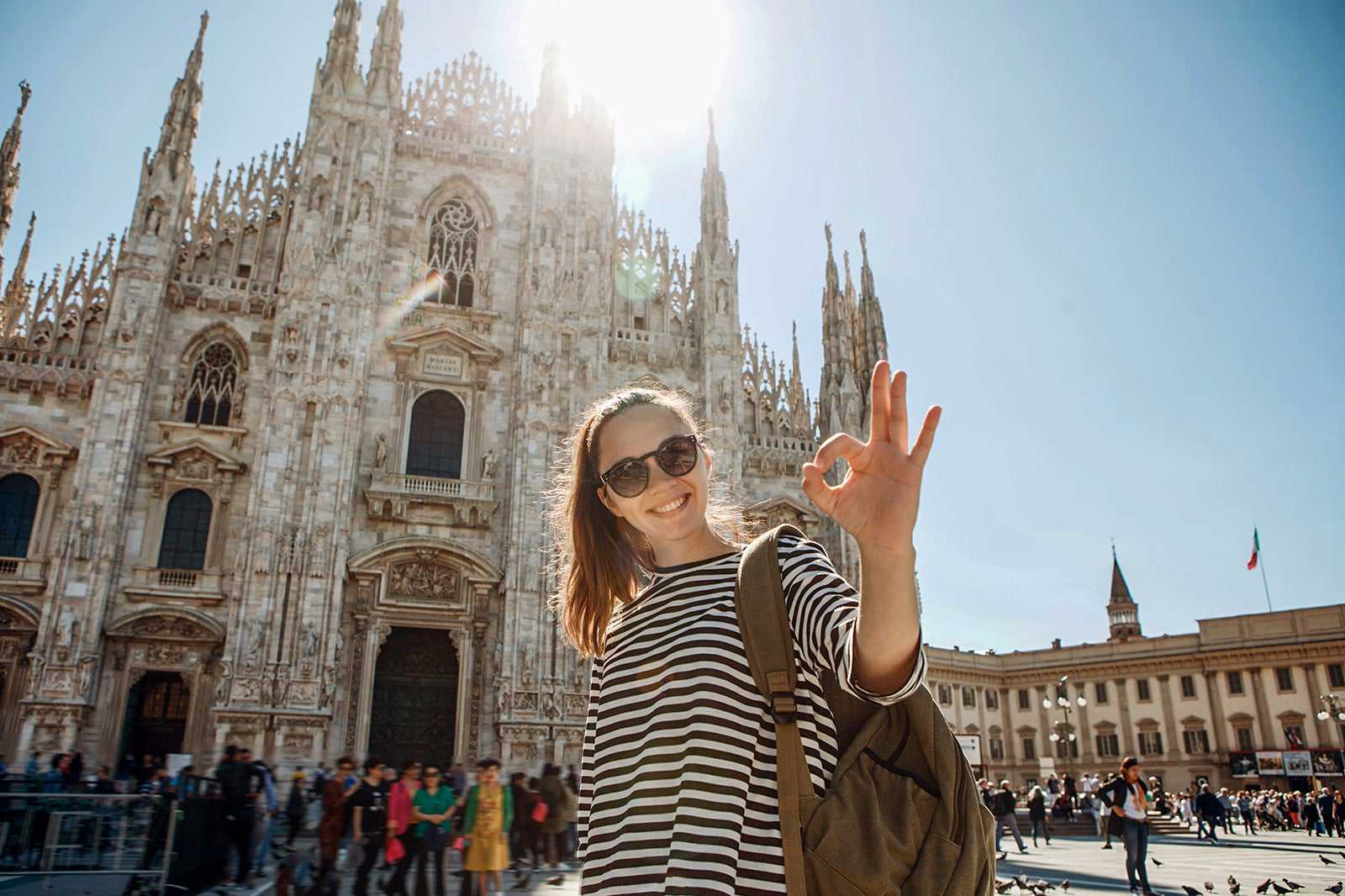Common mistakes people make when visiting Milan can range from innocent miscalculations related to travel planning to simply not being vigilant about where you should be. Slip-ups can happen in any part of the world you travel to, though some are specific to this great Italian city. Most are not especially critical, but some can be.
It’s always best to be prepared with some knowledge about what to do and what not to do in Milan. A certain level of vigilance and common sense is always helpful when you’re in the city, too. This guide presents a few points to help keep your experience of Milan smooth and blunder-free.
- 1
Not booking your visits in advance
You’ll have to – especially if you want to see The Last Supper

Most of Milan’s top sights – be it the Duomo (Milan Cathedral) or Teatro alla Scala – require tickets that you should book well in advance. And that’s especially true for seeing Leonardo Da Vinci’s famous mural, The Last Supper, at the Santa Maria delle Grazie church.
If the late 15th-century High Renaissance artwork is on your wishlist, you need to secure your 15-minute viewing timeslot for the convent’s refectory. Slots are limited, so you should be doing this long before your actual visit. Advance sales are open 2 to 3 months in advance, and bookings are done online.
- 2
Not getting the Milan Metro’s MilanoCard city pass
For convenient access to Milan’s transport network and more
Több mutatásaThe MilanoCard city pass provides you with ease of access to Milan Metro’s whole public transport network. Available as 1-day, 2-day and 3-day passes, the MilanoCard also grants you special rates on city tours plus free audioguides, discounts on access to some of Milan’s top attractions, and even a complimentary drink at select cafés or bars.
You can activate your MilanoCard at the ticket machines on your first trip when you travel by underground, city train, tram, or bus. Select and apply for your pass online then receive your MilanoCard via the dedicated app on your iPhone or Android device.
- 3
Not dressing right
Balance style and function, even in the Italian fashion capital

Fashionistas aiming for Insta-worthy shots against the Duomo or Sforza Castle may rock fancy outfits such as blazers or coats with Gucci bags, leather boots or stilettos. Even so, you should also consider function and comfort, appropriate attire for certain landmarks, and the time of year you visit.
If you’re planning for walking tours and a lot of sightseeing on foot, consider comfier shoes instead of high heels. Though no formal dress code applies, you’re expected to dress well when dining out – wear decent shoes and a dress or a jacket. For church visits, no shorts or tank tops (you're expected to keep your legs and shoulders covered). Pack light and breathable fabrics for summer, some layering options for spring, and warmer clothes, coats and a scarf for Milan in wintertime.
- 4
Touching fresh goods at the market
Just browse, point, and let the shopkeeper do the rest

When shopping at fresh markets in Milan (or anywhere in Italy, for that matter) you’ll likely see signs with a hand crossed and/or bearing the words “per favore non toccare” (please do not touch). Italians prefer shoppers not to handle their fruits and vegetables – not only for logical hygienic purposes but also simply because they take pride in their goods. Picking through a pile of plump plums can be seen as rude and a sign of distrust in their quality.
Simply have a look at what’s on offer and narrow them down to the variety or ripeness you’d prefer. Point and gesture how many you’d like to buy, then ask the stallkeeper to weigh, wrap, and pack them for you.
- 5
Letting your guard down
Beware of pickpockets, even in Milan

Pickpocketing is one of those petty crimes that occur in just about any major destination around the globe. That, unfortunately, also includes the haute couture capital of Milan. You’ll need to be vigilant about your wallet and belongings when exploring this European fashion hub.
Pickpockets in Milan operate in tight and crowded places like on the train and at the Milano Centrale station. They either work alone or in tandem, anywhere you’d easily be distracted. Money belts are a good idea, but. Avoid carrying loose valuables or keeping your wallet in your back pocket.
- 6
Going for late lunch
Last orders are at 2.30 pm!

If you go for a late lunch in Milan, chances are you’ll find yourself in front of closed doors. Many restaurants in Milan stick to their traditional restaurant hours. Lunch is served from 1 pm to 3 pm, with the last orders taken at 2.30 pm. They open again for dinner at around 7.30 pm, start serving from 8 pm and stay open through 11 pm or later.
Some hotel restaurants are open the entire day, both for their in-house and outside guests, but most generally don’t. Want to sip a negroni or spritz during aperitivo hour? That’ll be between 6 pm and 8 pm. Some fancy rooftops and bars in Milan open just before that.
- 7
Dining [only] around touristic sites
Culinary adventures in Milan should be… adventurous
![Dining [only] around touristic sites](https://goguides.azureedge.net/media/5i2brhxm/74ad4de3-1cae-4c1f-8df9-87517a645f11.jpg?anchor=center&mode=crop&width=1600&height=1066&quality=50)
Restaurants and bars in Milan’s city centre and around the Duomo can be rather pricey. If you’re a foodie on a budget, it’s worth exploring outside the Milan metropolitan area (Grande Milano) for a bit of discovery.
Porta Romana is a cool option southeast of the hub, its busy streets home to trendy bars and stylish restaurants with competitive prices. Besides trying out great Italian dishes and snacks such as Milanese veal and risotto, ossobuco (braised veal shanks) or piadina (flatbread sandwiches), you can also find plenty more variety in Milan’s Chinatown, just north of the city centre.
One faux pas related to dining in Milan is asking for non-Italian “Italian” dishes. You’d be surprised by how many US-origin “Italian” dishes that you see everywhere in the States can't be found anywhere in Milan. And we’re not just talking about the controversial Hawaiian pizza…
- 8
Choosing fancier gelati over artisanal ones
Explore a gelato haven

If you have a sweet tooth, you’ll soon find yourself exploring the dozens of gelaterias scattered throughout Milan. It’s okay to slurp your way through the city for different tastes of this classic frozen Italian treat. But don’t just start your adventure at the nearest gelateria you happen to stumble upon.
Around the touristic hub, you’ll find many gelaterias tempting you with many colourful and fancy selections of gelati. But it’s the gelato artigianale (artisanal gelato that's made on-site) places you should be hunting for, serving the classics such as stracciatella (vanilla and choco-bits), fior di latte (milk cream), and cioccolato gianduja (choco-hazelnut). Antica Gelateria Sartori, northeast outside the city centre is a fine source. Another is La Gelateria Della Musica on Via Lodovico Il Moro, a 15-minute drive southwest of the city centre.
- 9
Tipping
It’s appreciated but not expected

Tipping isn’t essential in Milan or anywhere in Italy. But if you had the fine-dining experience of a lifetime and feel your wait staff delivered truly exceptional service, then a 10% tip or some leftover change from the bill is always appreciated. Most businesses would already have service charges added to the bill anyway.
- 10
Not choosing the right area to stay
Choose to be near iconic landmarks, nightlife spots or somewhere budget-friendly
Több mutatásaWhen choosing a place to stay, remember that cheaper hotels far from the city centre can end up being a false economy as you end up spending more on transport than you saved on accommodation. If you wish to stay near most of Milan’s iconic landmarks such as the Duomo and the swanky Galleria Vittorio Emanuele II, then Centro Storico is the place to be. Naturally, rates are higher in and around this historical centre. For buzzing nightlife scenes, the trendy neighbourhood of Navigli is a cool area, just southwest of the city centre.
A few minutes north of Centro Historico, Porto Venezia is a good choice if you’re visiting Milan on a budget. This area is also great for families with kids, with the lush and leafy Giardini Pubblici Indro Montanelli filled with 18th-century gardens at its heart. The park is also home to the Milan Natural History Museum (Museo Civico di Storia Naturale di Milano), the Palazzo Dugnani, and the Civico Planetario Ulrico Hoepli planetarium.





















